Kia EV9: Five-metre SUV with 541 km range
Just two weeks after teasing the design, Kia has now presented the EV9, ready for series production and with full technical specs. The large E-SUV comes with a different drive system than the EV6 and has a slightly longer range.
While Kia published the data officially tonight, it remains preliminary until testing is completed. So far, however, the Korean carmaker has given the Kia EV9 a range of 541 kilometres, according to the WLTP standard. The EV6 reportedly has an actual range of 528 kilometres. Since the EV9 is considerably larger and bulkier (cW: 0.28) with a length of 5.01 metres, a width of 1.98 metres and a height of 1.76 metres, the electric SUV requires a larger battery. This battery has an energy content of 99.8 kWh (whereby Kia usually states the net usable values).
The 99.8 kWh battery will be available with two drive options: The single-motor rear-wheel drive which has an output of 150 kW, with 350 Nm of torque, and the five-metre SUV can accelerate to 100 km/h in 9.4 seconds. Combined with the 19-inch wheels (up to 21 inches are available as an option), the WLTP range is 541 kilometres. Kia has not yet published range data for the other drive configuration.
The small battery only comes with rear-wheel drive; EV9 GT arrives in 2025
There will also be an all-wheel drive with a second motor on the front axle. With 283 kW of power and 600 Nm of torque, this variant is significantly more powerful and can accelerate to 100 km/h in 6.0 seconds. With an optional “Boost” upgrade, which is to be available via the Kia Connect Store. Here, Kia states no less than 700 Nm of torque; the standard sprint should then be possible in 5.3 seconds.
The entry-level model has a smaller battery, which at 76.1 kWh, differs slightly from the familiar 77.4 kWh battery of the EV6. Kia will offer only a rear-wheel drive in this model with 160 kW of power and 350 Nm of torque (0-100 km/h in 8.2 seconds). The small battery option will probably not feature an all-wheel drive.
On the other hand, Kia announced a future fourth drive option at the world premiere: The EV9 GT will be available as a performance offshoot from 2025. Kia is not yet giving performance data, but the Korean company’s top management stated they were closely observing the market for high-performance vehicles in this segment. Nevertheless, Kia does not want to drift into the premium segment but remain a volume manufacturer, saying that more affordable electric cars will also follow in the near future.
Since the EV9 is based on Hyundai-Kia’s E-GMP platform, the car has the familiar 800-volt system. Kia has not yet revealed the exact charging power or the charging time for the usual range from ten to 80 per cent. The only information released during the debut show was that the EV9 could recharge 239 kilometres in 15 minutes. AC charging was not mentioned; anything other than a three-phase onboard charger with 11 kW would be unlikely, given the platform. Since the Integrated Charging Control Unit (ICCU) of the E-GMP also has the “vehicle-to-load” function known from other models, the EV9 will also get this feature. In Europe, up to 3.68 kW can be drawn from the vehicle battery with an adapter to power other electrical devices such as laptops, household appliances or camping equipment or to charge the e-bike battery.
Up to 2.5 tonnes towing capacity and new driving assistants
The EV9 – presumably from the GT-Line trim onwards – will probably also feature the new generation of driving assistance systems. Kia refers to this as a ‘Highway Driving Pilot’ instead of the previously offered ‘Highway Driving Assist’. With its 15 sensors, the HDP is supposed to enable autonomous driving according to Level 3; Remote Smart Parking was also demonstrated at the world premiere, although this system will be offered in this form “in some global markets”.
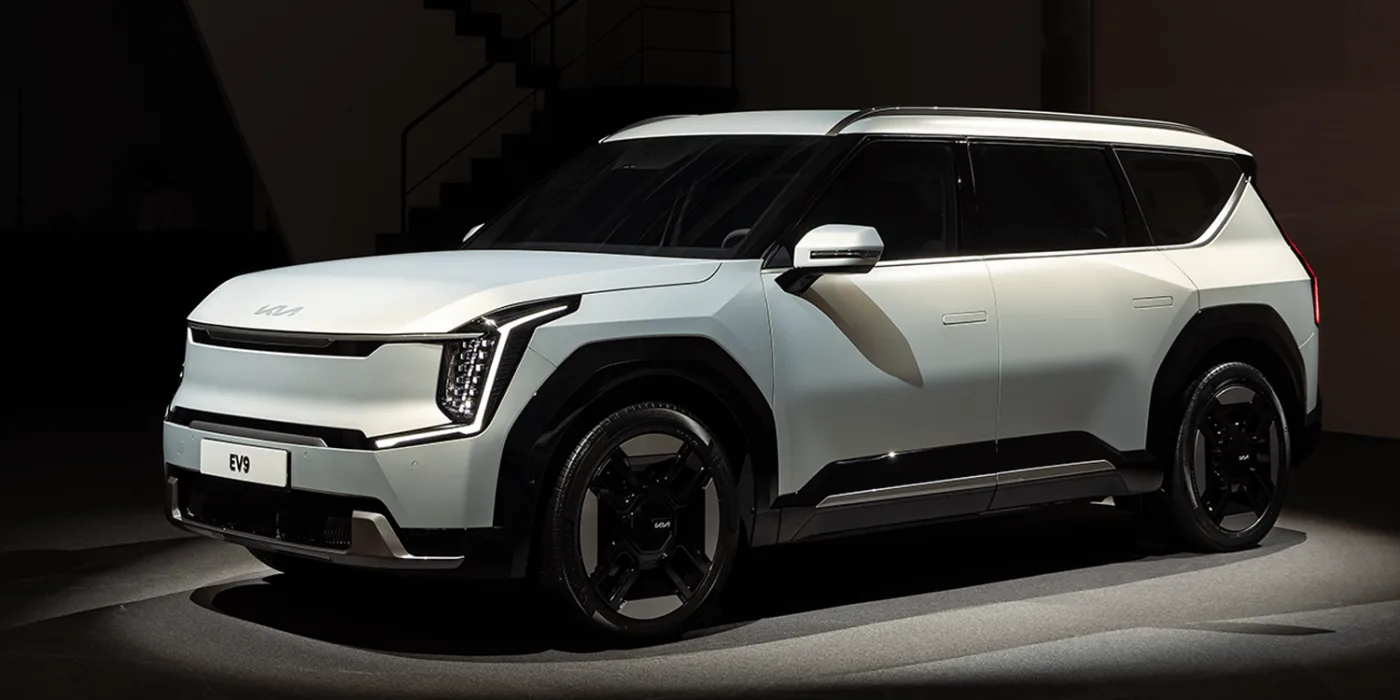
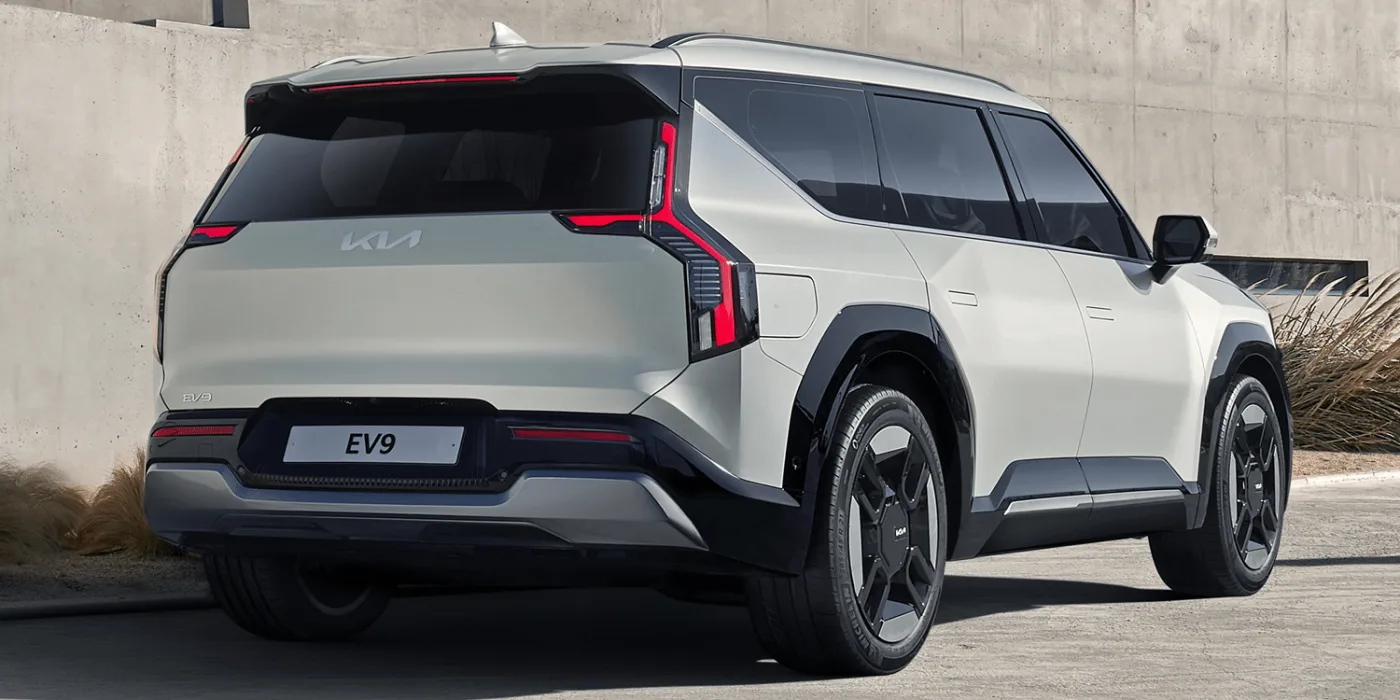
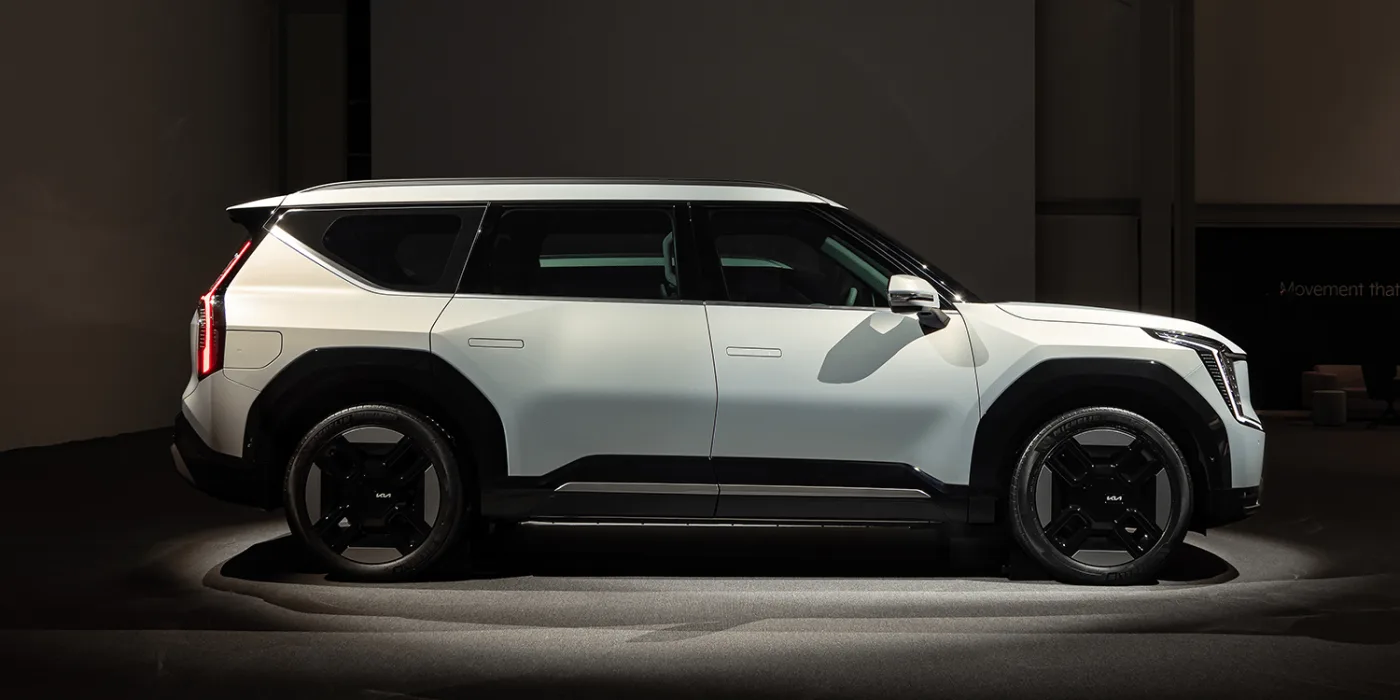
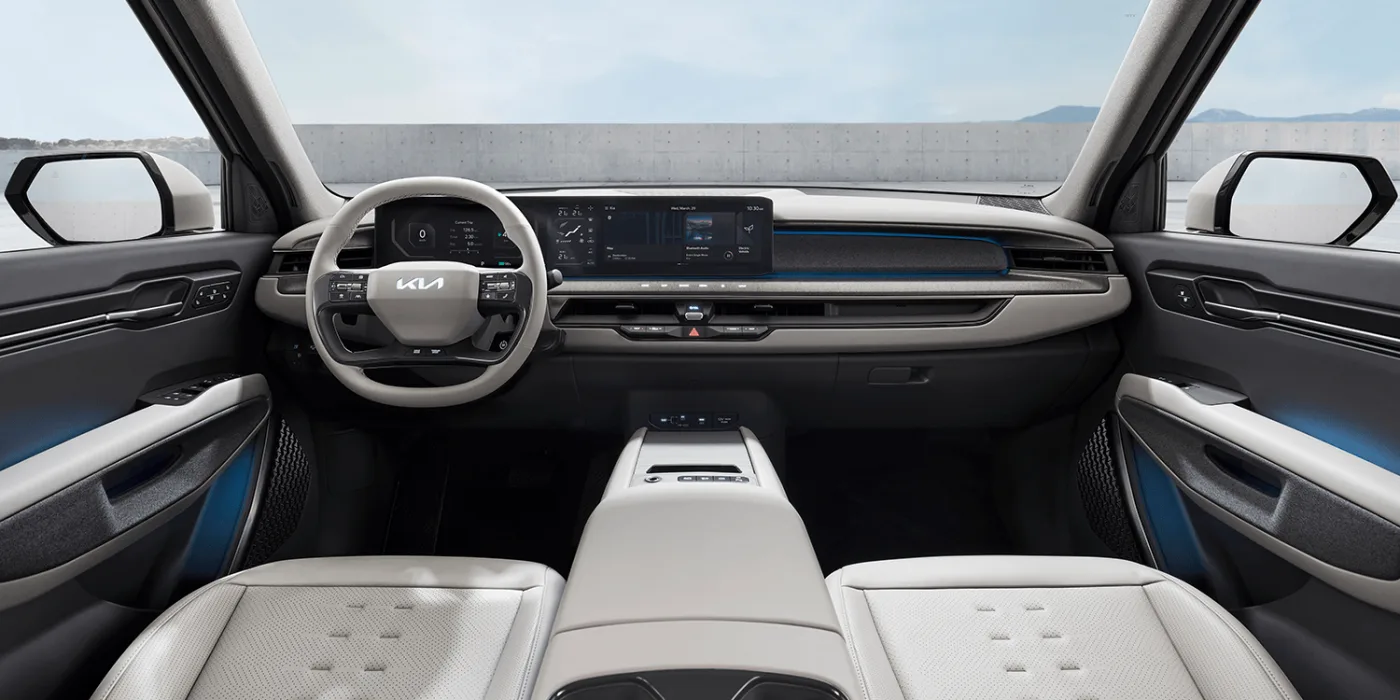
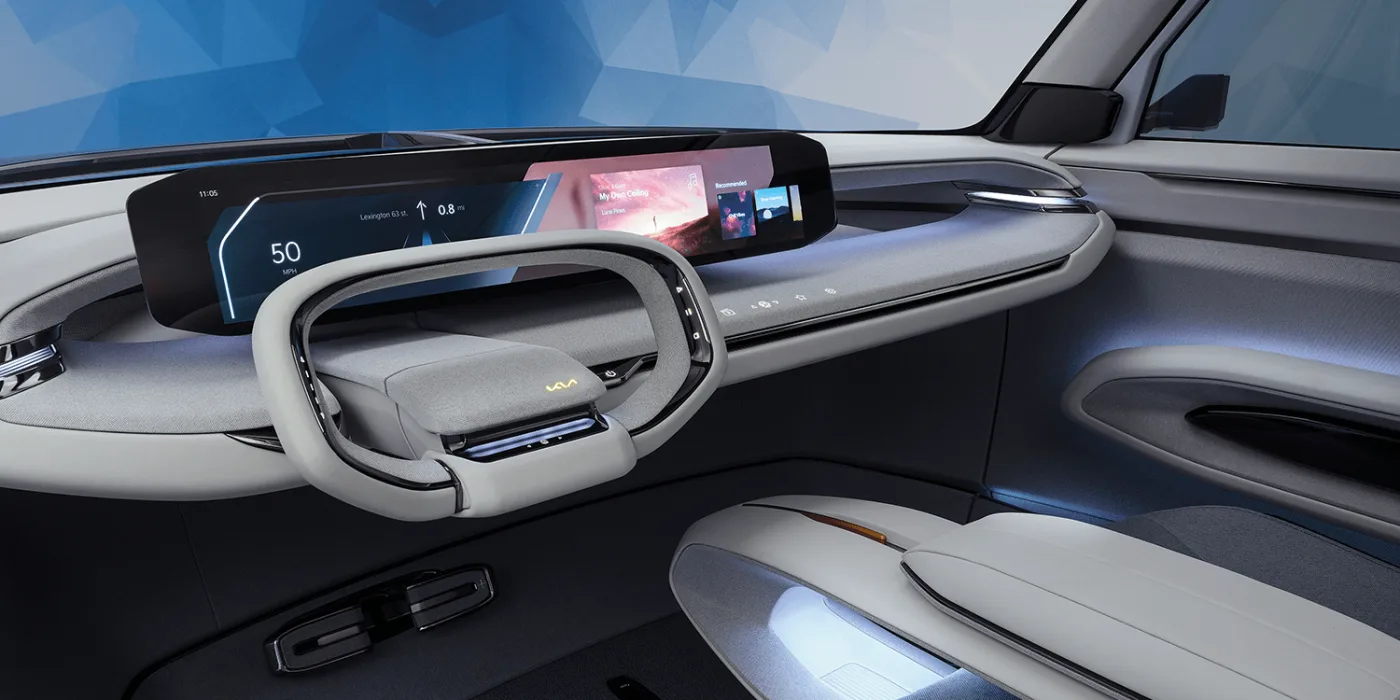

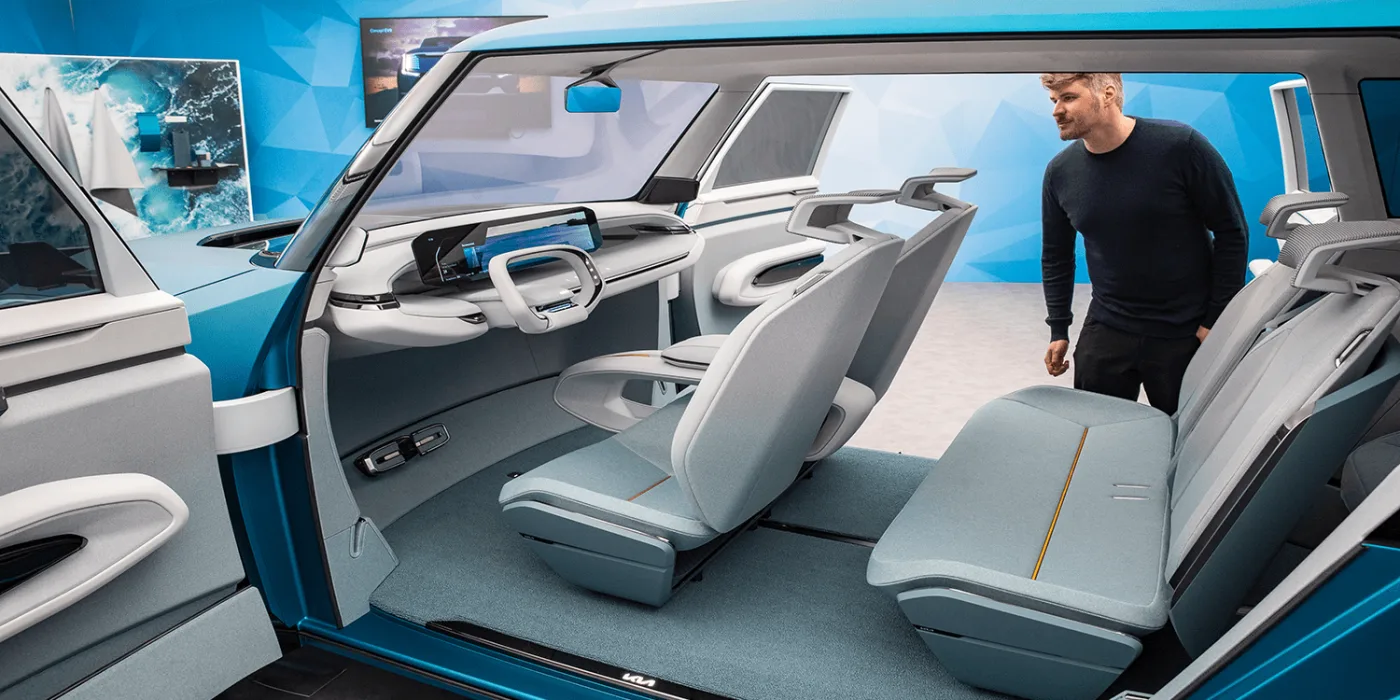
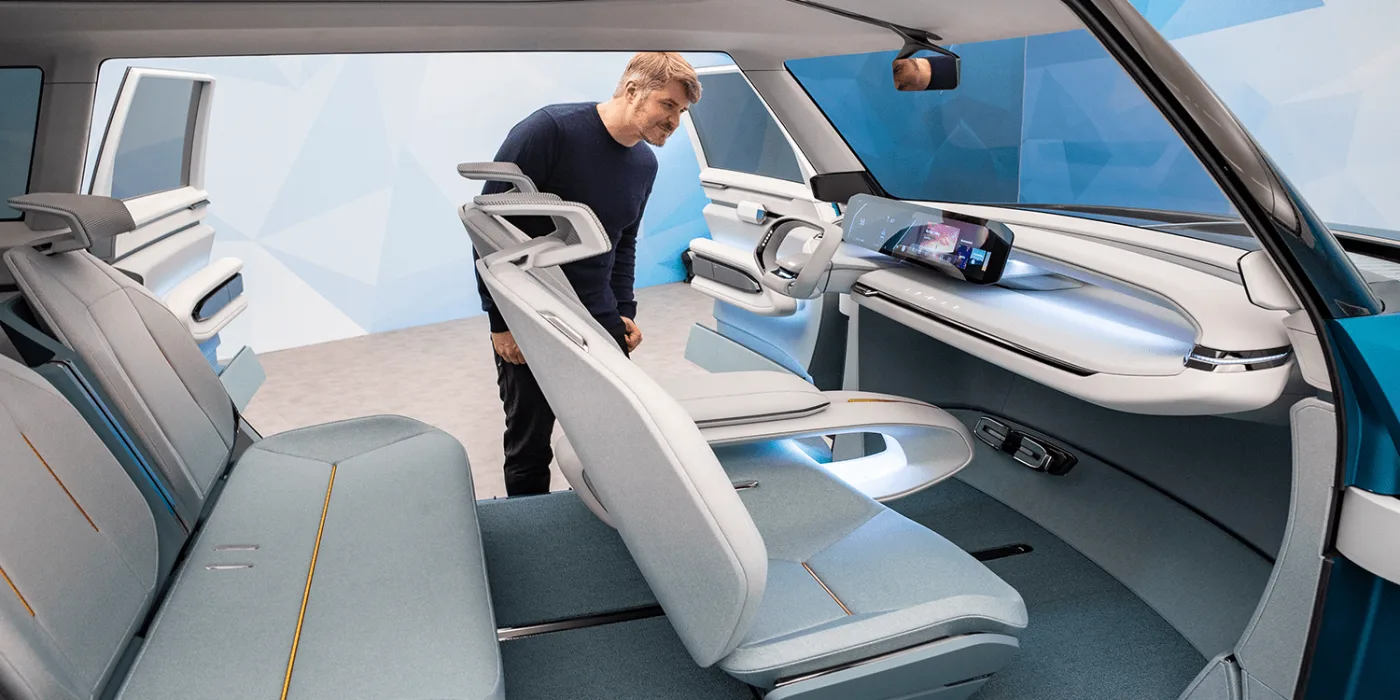
This also applies to other Kia announcements: For example, there will be four possible configurations for the middle row of seats – two front seats and two seats in the rear row are always on board. There will be a three-seater bench seat, making the EV9 Kia’s first electric seven-seater. On request, there will also be reclining single seats that can be adjusted to a comfortable reclining position like the front seats in the EV6. Another option is individual seats that can be turned 180 degrees with a flick of the wrist to create a four-seat group in the back. But again, it is unclear whether all options will be offered in all markets. In the case of Hyundai and Kia, the national import companies usually decide which equipment will be provided as packages or individual options based on expected demand. This should also apply, for example, to the (presumably optional) camera exterior mirrors.
One thing is clear: With a towing capacity of up to 2.5 tonnes (or 5,000 pounds in North America), the EV9 will outperform its platform brothers. However, there is only this one figure for towing capacity so far, so it is still unclear whether the 2.5 tonnes are only possible with a specific drive configuration. And under the front bonnet will be a small frunk for charging cables, while the charging port sits at the rear right of the E-GMP.
A brief addition to the design previously on show – when Kia published the first pictures of the body and the interior a fortnight ago, it looked as if the individual LEDs integrated into the front would not make it into series production. But that is now the case, possibly as an extra chargeable feature. A unique feature is that the light pattern of these LEDs is supposed to vary, for example, depending on which driving mode is selected.
Kia has not yet announced prices for the EV9 but has already set a schedule. Pre-orders will open in South Korea during Q2, followed by “select global markets” in the second half of the year, including Europe. It is not yet clear when deliveries will start.
There may be waiting times again, at least regionally. Kia has set production at a maximum of 100,000 units per year, but distribution to the different sales regions worldwide has not yet been decided.
With reporting by Sebastian Schaal, Germany.



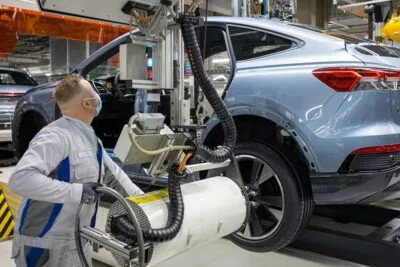
0 Comments